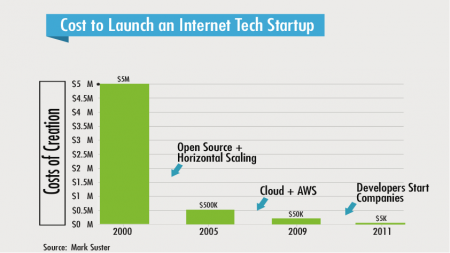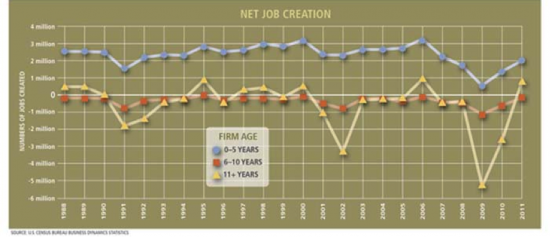July 15, 2015 – In his latest email blast Peter Diamandis tackles a subject near and dear to my heart – the risk taking nature of entrepreneurship and what it potentially means for us in the 21st century as we face numerous challenges. It seems not too long ago that R&D was something governments threw money at. But here in Canada pure research funded by government is being squeezed. And it is similar in the United States. Peter’s take on the subject is worth reading.
———-
It’s sad that the U.S. government doesn’t fund risky research anymore. After all, “the day before something is truly a breakthrough, it’s a crazy idea”… and if you’re not funding crazy ideas, you’re stuck with linear (incremental) thinking.
Historically Speaking
Historically, government funding accelerated some of the most important technologies on which our entire global infrastructure now heavily relies: The microchip, GPS, wind energy, cancer therapies, touch screens, the Internet. Even Google probably wouldn’t be around had it not been for government funding. In 1994, NSF, DARPA and NASA funded the Digital Library Initiative to index and sort through the growing number of websites coming online. One of the six grants from the Digital Library Initiative went to two graduate students at Stanford — Larry Page and Sergey Brin — who would later commercialize their research and call it “Google.”
Government Doesn’t Fund Crazy Ideas Anymore
In fact, as the data from a recent NIH Report shows, the more innovative a concept, the less funding it receives.

Why does this happen? Governments (and large corporations) have a tremendous fear of (public) failure, which leads to congressional investigations or lower stock prices. And, as my friend Chris Lewicki says, “When failure is not an option, success gets really expensive!”
Here’s one of my favorite stories. Did you know that that the $2.5 billion Curiosity Rover (which landed on Mars in 2011) is running a PowerPC processor that was built in 1993? Why? Because NASA knows it works, and they don’t “want to take a risk” with a newer processor that is unproven. Even stranger, guess what processor the next mission “Mars Rover 2020” will use when it touches down on the surface of Mars in 2021? Yup, you guessed it, a 1993 vintage PowerPC.
At the same time that the government is getting more and more risk averse, the total amount of U.S. federal R&D dollars continue to shrink (as a percentage of the federal budget) by more than 60% over the past 50 years. [This is also true for Canada.] It really is a sad state of affairs.
What’s going to keep the country on the innovation cutting edge?
Entrepreneurs. Today’s entrepreneurs have access to technologies once only available to governments and the largest corporations: the world’s information is on Google, massive computation power on AWS, access to capital and expertise from the crowd, all instantly accessible. At the same time entrepreneur reach has increased with the cost of launching an Internet technology startup plummeting 1,000-fold over the past 15 years.
With this democratization of entrepreneurship we’ve seen a dramatic rise in the number of startups created and concomitantly an increase in innovative solutions to problems that previously were unsolvable. And rather than shrinking (as we’ve seen in government R&D funding) private sector funding has steadily increased more than six-fold over the past 80+ years. The result – companies like Google, SpaceX, IBM, Facebook, Qualcomm and countless others are moving the needle forward developing technology that solves key problems. After all, the world’s biggest problems are the world’s biggest business opportunities.
As the Kauffman Foundation reported a few years ago, “New businesses (i.e. startups) account for nearly all net new job creation and almost 20 percent of gross job creation.”
If we can continue to incentivize and support entrepreneurs to devote their time to solving the world’s biggest problems, we will see enormous economic upside in the long run.
Bottom line: If you’re looking to make a difference in the world. You can vote, politic, fund campaigns, write grants… or you can start a company and build technology.
———-
A quick editorial note – What Peter doesn’t talk about is the continued investment in R&D made by NASA. ARPA and DARPA, where disruptive innovation seems to be accepted without fear of risk. Nor does he talk about the numerous contests and prizes that today seem to drive innovation in these U.S. government funded public enterprises. But for the most part it is undeniable that innovation is increasingly being driven by entrepreneurship with the Internet the prime vehicle for bootstrapping the business on your own dime or for finding initial investors.













